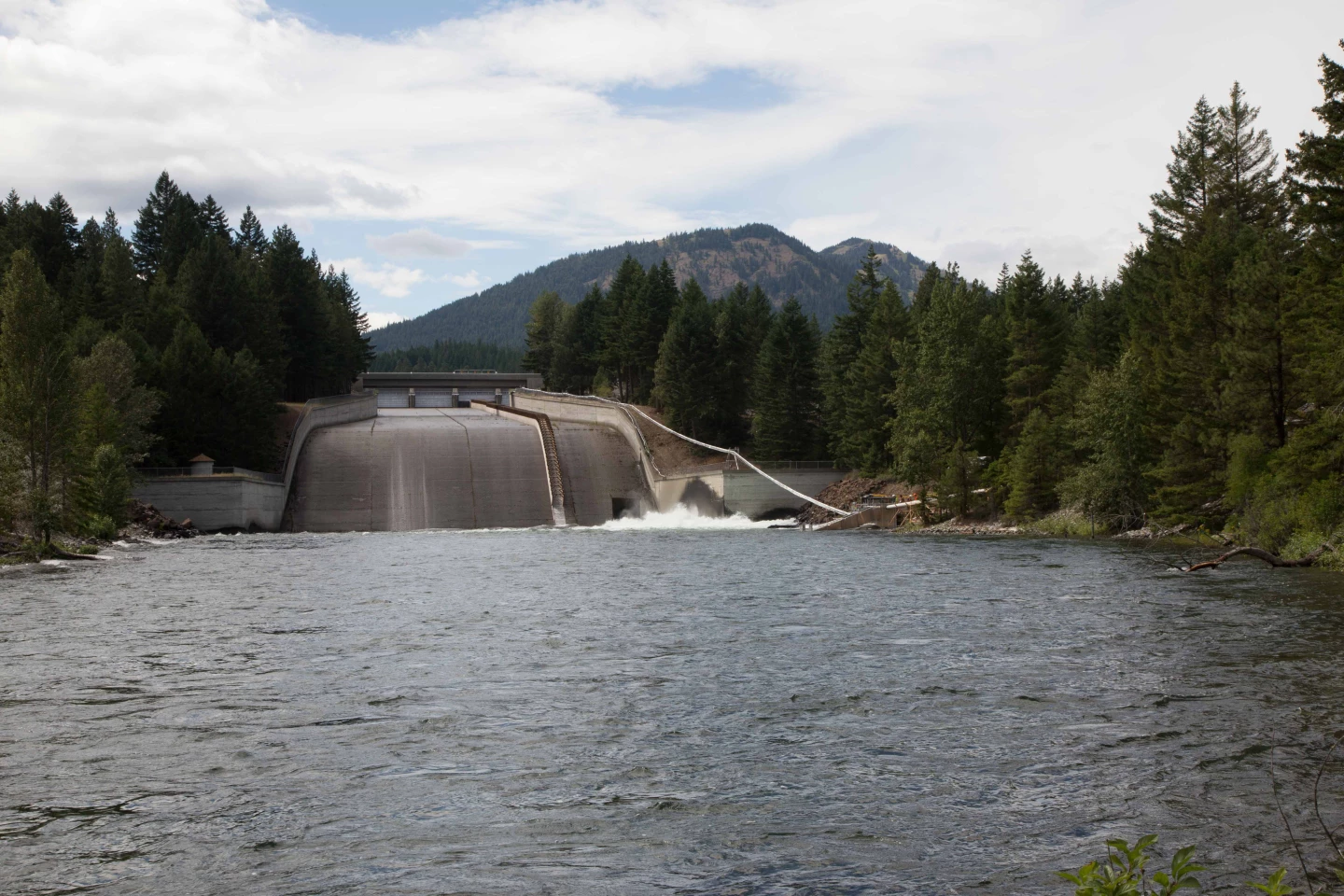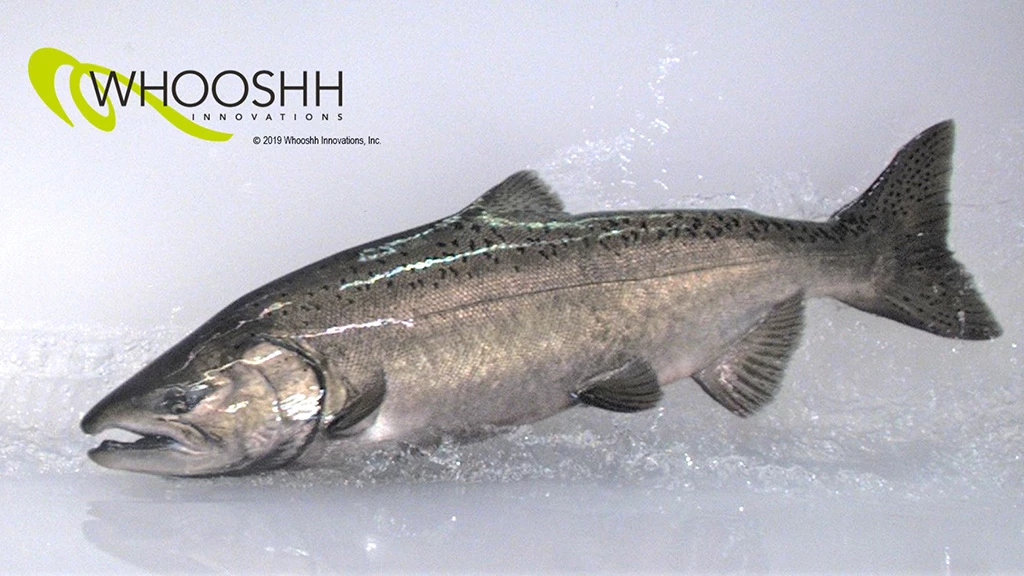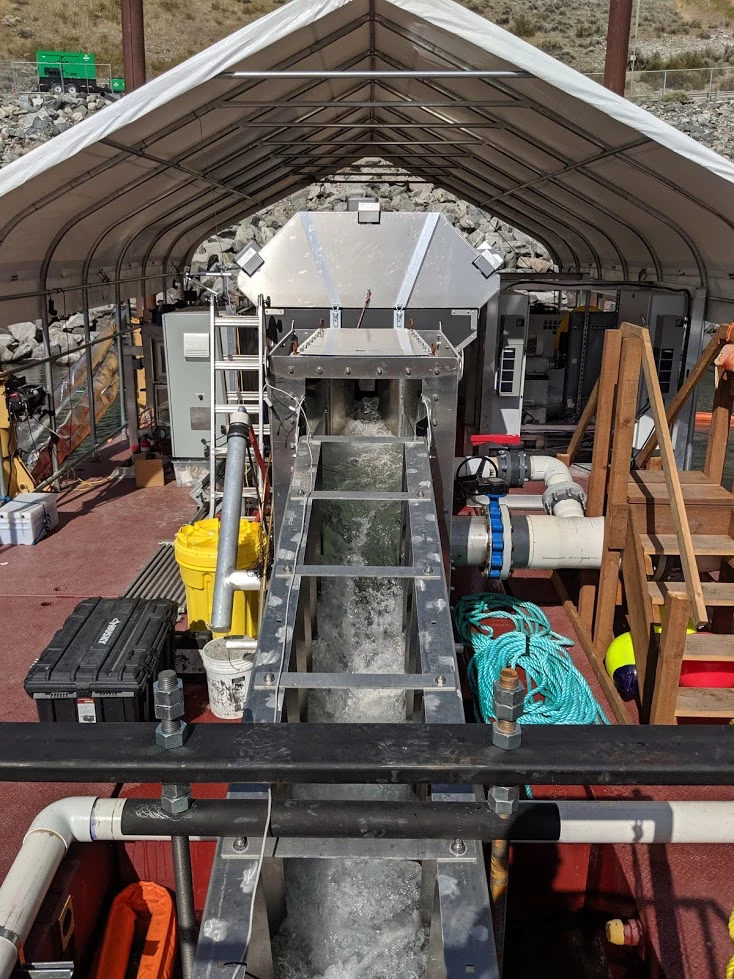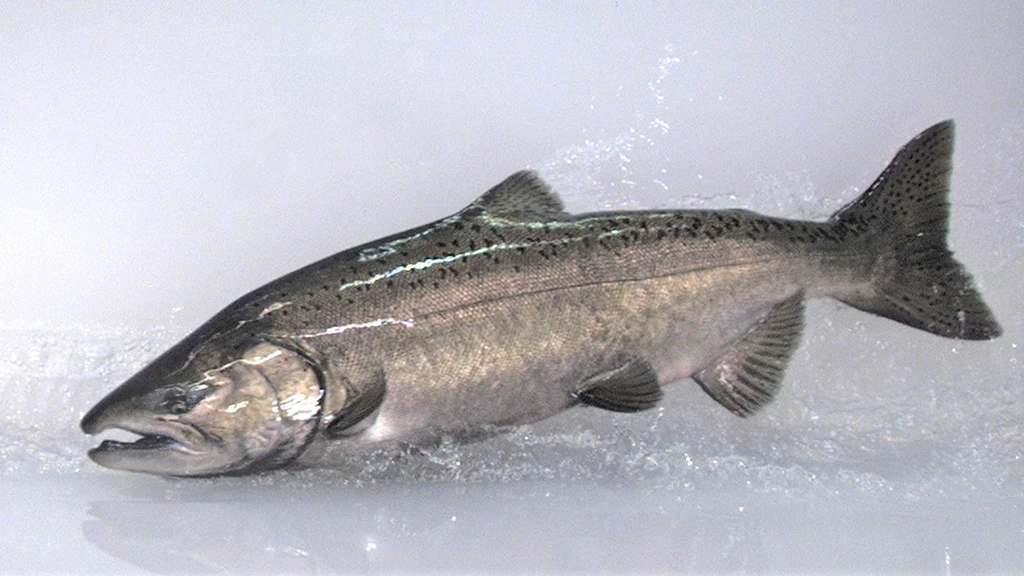Back in 2014, we heard about a so-called "fish gun" or "salmon cannon" that safely shot spawning fish up over river-blocking obstacles such as dams. Its successor is now in use, offering a couple of key advantages over the original system.
Manufactured by Seattle-based Whooshh Innovations, the salmon cannon's actual name was the Whooshh Transport System. To recap our previous coverage, it was basically a flexible plastic tube hooked up to a motorized air pump. One end of that tube was located in the river at the bottom of the dam, while the other was located up at the top.
The original “salmon cannon,” as it was dubbed on social media, was first used to get fish into a truck or when handling/transferring them into a hatchery or aquaculture operation. The fish were manually loaded into the bottom end of the system, where the lower air pressure inside sucked them in and up the tube. A pressure difference of about 2 PSI shot the fish along at 5 to 10 m/sec (16 to 32 ft/sec).
Although quite clever, the system was limited by the fact that the fish had to be hand-loaded into the tube. Not only was this time-consuming and labor-intensive, but it was also stressful to the fish. At the time, the company was looking into a method of enticing the fish to enter the setup voluntarily. That feature is now a standard part of the new-and-improved Whooshh Passage Portal.

At the bottom end of the portal is a "Fishway" chute which water continuously flows out of. Fish swimming upstream are instinctively drawn to that flowing water, swimming up the chute in the same manner they would attempt to swim up over a weir.
The fish then slide through the FishL Recognition Scanner where multiple cameras take a total of 18 photos of them in less than one second. Those images are instantaneously analyzed by a computer system, which ascertains the species, size and other characteristics of each animal.
From there they fish glides through a chute and into a pneumatic tube system which uses very low air pressure to gently push the fish through the tube. As was the case with the previous system, the water within the tube is misted. In this way, it still provides lubrication while also protecting the fish from rapid changes in water pressure as they ascend to the top of the dam.

This not only allows biologists to keep track of what sort of fish are in the river, but it also lets the system "refuse entry" to undesirable species. If an invasive species of fish is detected, for instance, it can simply be diverted (via a gate) back into the river below the dam – or into a pen for subsequent collection – instead of being carried up over the dam to continue on its way.
Among other things, the Whooshh Passage Portal has already been used to help salmon migrate over a landslide blocking the Fraser River in British Columbia. Tests are currently being performed to see if it could also be utilized to remove invasive asian carp from the Illinois River.
The system can be seen in fish-pumping action, in the video below. And for an example of a similar setup that's still in development, check out the Australian "tube fishway."
Source: Whooshh Innovations








